Feeding
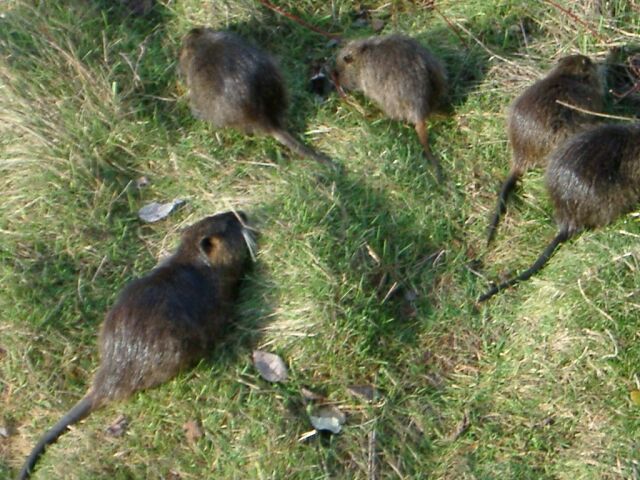
Nutria feed on grass, reeds, and other plants, sometimes digging up the whole plant.
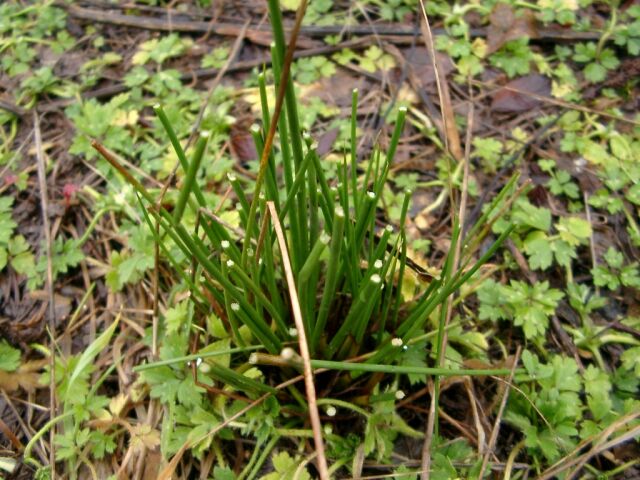

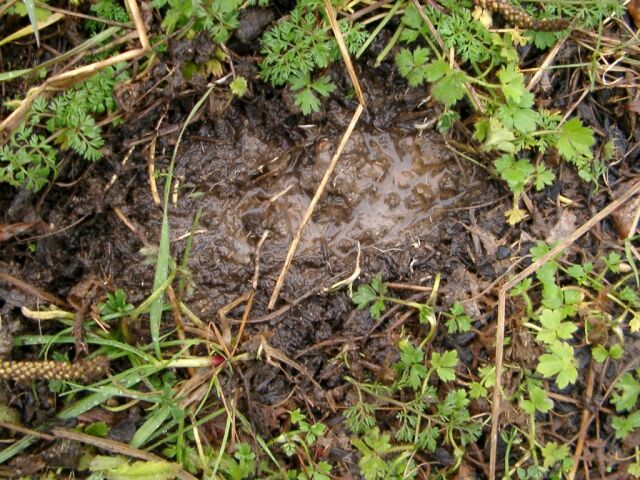
Den
The den is usually dug into the bank
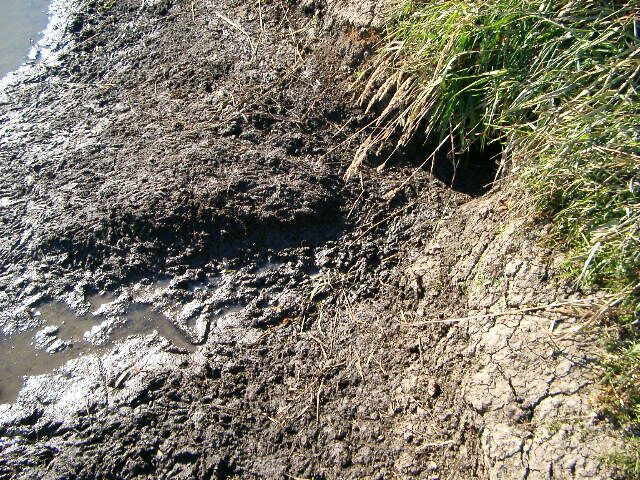
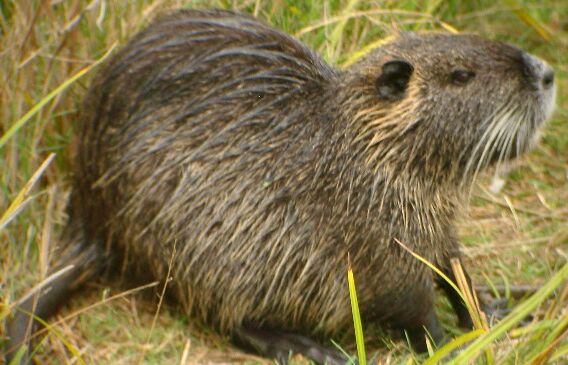
This native of South America, where it is known as coypus, was imported to the US for fur production but the market never materialized. A number of nutria either escaped captivity or were released into the wild in the Willamette Valley. There is currently a healthy population in certain areas around the country.
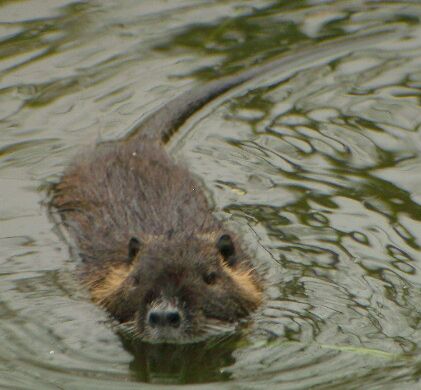
Nutria are often confused with beaver or muskrat. Look for the round naked tail, the light colored fur behind the ears, and heavy white whiskers. All rodents have orange incisors but they seem particularly noticeable in nutria. Adult nutria are much larger than muskrat but overlap with beaver in size. When swimming in the water, nutria may take a more random or variable route according to some observers.
Near my home in Tigard, a Portland suburb, I found a fenced wetlands squeezed between two shopping centers with a thriving, but isolated, population. Here I was able to observe social behavior, feeding, and scat. At Jackson Bottoms I was able to find good examples of tracks and gait.
Unlike most rodents, the front foot has 5 toes though the inner toe is short.
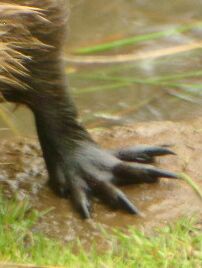
The hind foot is distinctive since the first (inner toe) of the hind foot is positioned further back on the foot than other rodents and is free of the webbing (i.e., there is a gap in the webbing between toes 1 and 2).
Individual tracks are often obscured in areas of high concentration. Superficially, the tracks may resemble those of beaver. Where you find single tracks, however, the 5 toes of the front foot and the distinctive 1st toe of the hind foot help. The webbing of the hind foot can be seen between the toes except for 1 and 2.
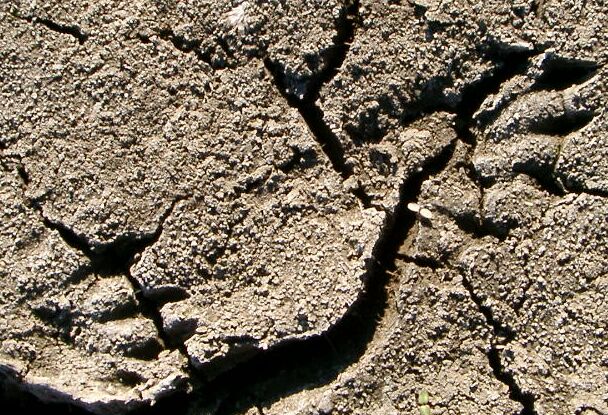

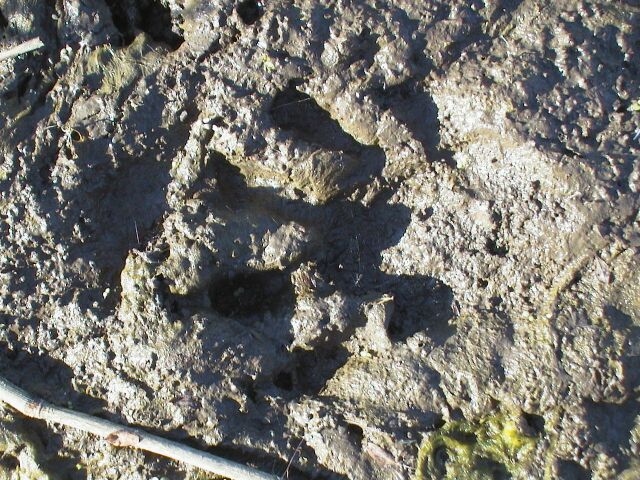
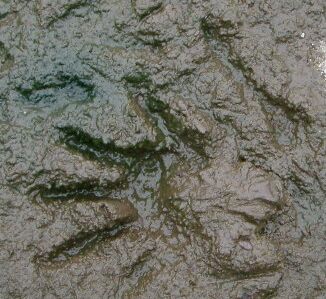
A walk, with alternating stride, is common.
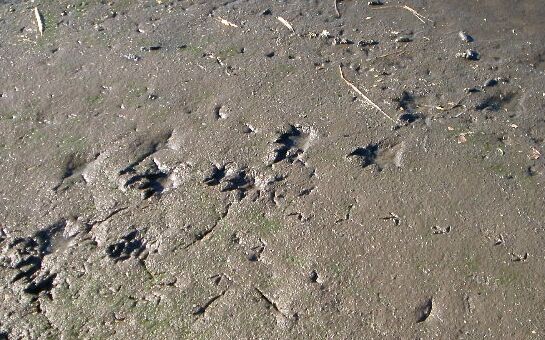
An amble (a fast walk with hind foot overstepping the front foot) is often seen.
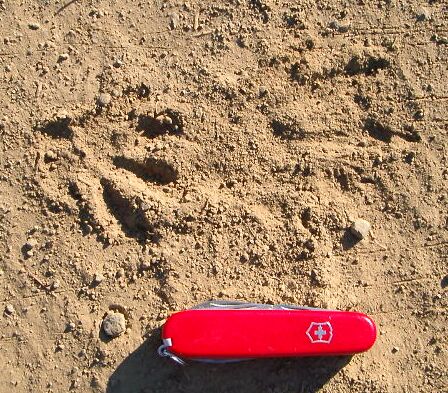
Nutria can move surprisingly fast when they need to. I found this galloping pattern crossing a road but have not yet witnessed this gait.
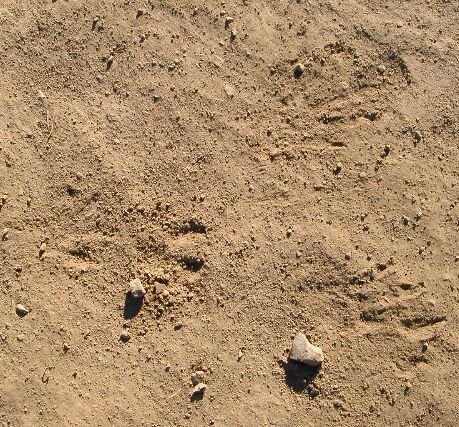
The scat contains only vegetable matter and is tapered at both ends.
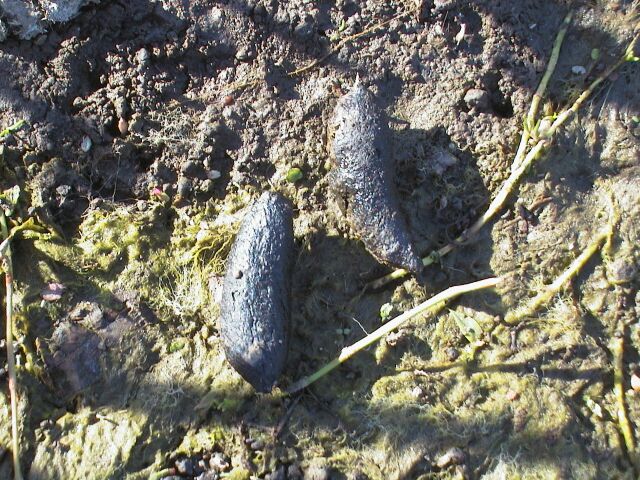
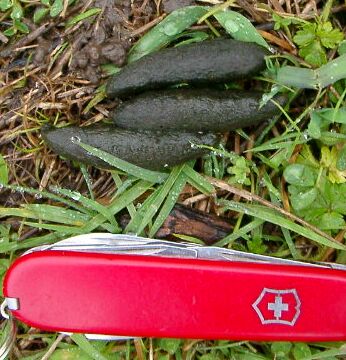
Nutria can be highly social. When one found something to eat, others would run over to investigate. At times, feeding is done in groups with as many as a dozen feeding in close proximity.
When not eating, nutria continue to interact, often with much touching, jostling, and chasing. If one adult breaks away, heading for another spot, the younger nutria may create a procession behind the adult.

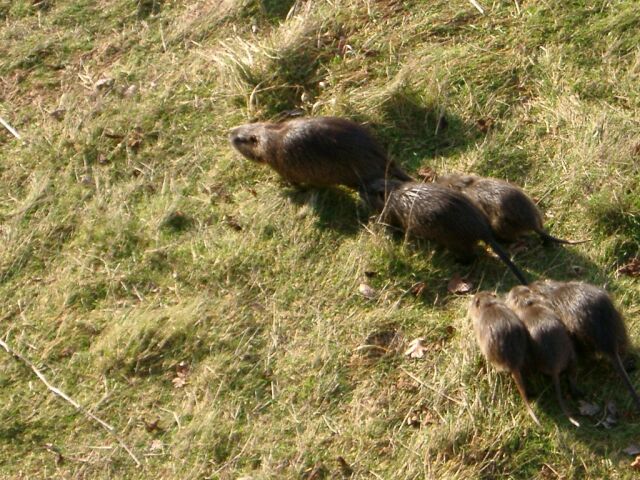
Nutria feed on grass, reeds, and other plants, sometimes digging up the whole plant.
The den is usually dug into the bank Feeding




Den
